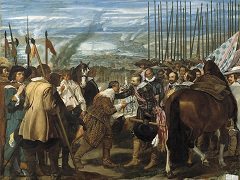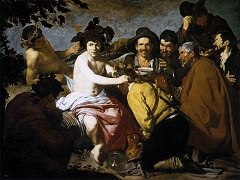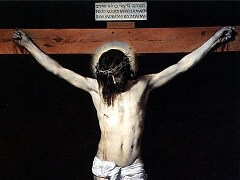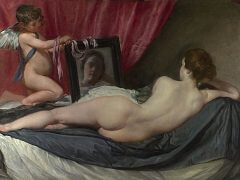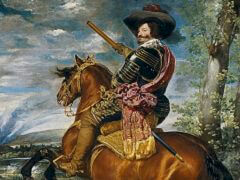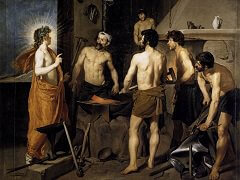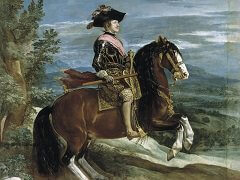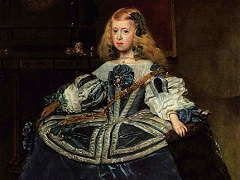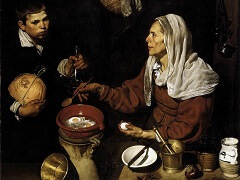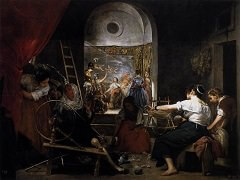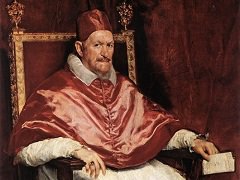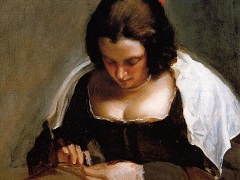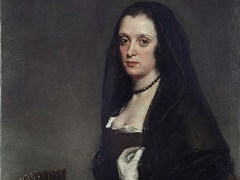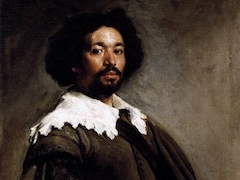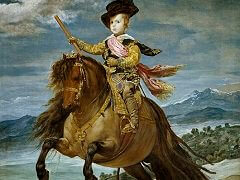Las Meninas, 1656 by Diego Velázquez
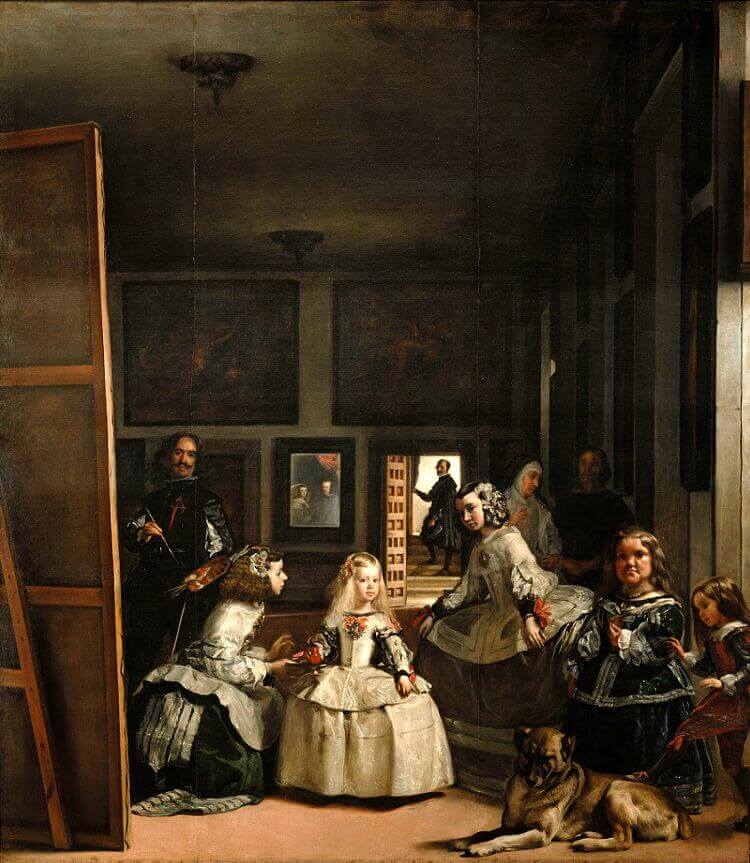
Las Meninas, or The maids of the infanta Margarita, is perhaps the absolute masterpiece of Velázquez, in that it epitomizes and synthesizes nearly the whole of his poetic world. The painting is an inexhaustible collection of human types and situations and also a mysterious feat of imaginative and representative capacity. While it gives us the only reliable self-portrait of the painter, it presents us with absolute fidelity, even to the pictures hanging on the walls, with the surroundings in which he worked, and explains to us his relations with the royalty. Moreover, it shows us his inventive originality even in a work of official character: in fact a work such as this had never been painted before, and to find some terms of comparison we must look in The Artist's Studio of Gustave Courbet. Every traditional convention is not only modified, but overturned.
Above all, it is not the painter who is witnessing what is happening, but we are witnessing the painter and his adherence to the truth. And he paints us who are looking at him - or rather those who are going to receive the painting: the royal couple, who are looking at him, reflected in the mirror in the background). But what is happening in this studio that is worth all this attention? Nothing in particular, and oddly enough there is not even the double portrait of the sovereigns the painter is pretending to be working on. The infanta Margarita, who is five here, has come to visit her mummy and daddy, who are having their portraits painted, and she has her little court around her: the maid-in-waiting Maria Agustina Sar-miento, who is offering her something to drink, and another "menina" Isabella de Velasco, who is giving her a friendly look, as well as the German dwarf Maribarbola and the Italian dwarf Nicolasillo Portosanto. Two "guardadamas" are conversing, and in the background facing the door, in a very elegant pose, is D. Jose Nieto Velázquez, a relation of the painter. Thus we see grouped in one painting all the most intimate "family" of the sovereigns. It is true, the infanta occupies a position in the foreground, and it is on her that the light from the only open window ceremoniously falls. The scene, however, because of the confusion and the casualness of attitude, the odd contrasts of proportion among the figures, becomes more a genre-painting than a portrait: in other words, the prank enters the king's palace.

